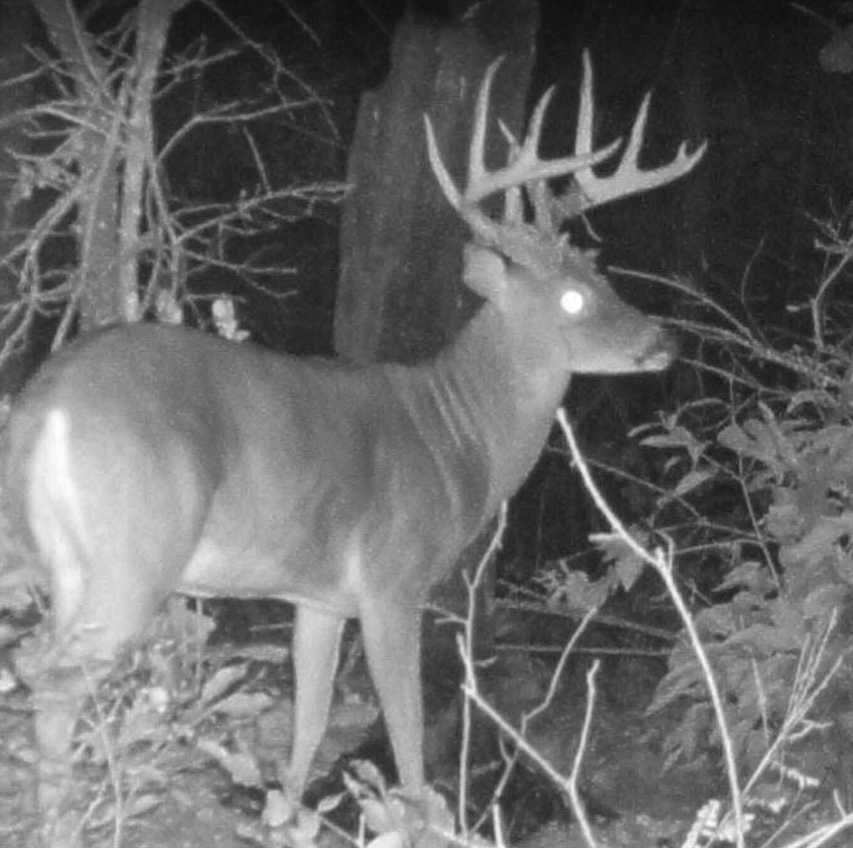For any archery hunter, there is no greater experience on earth than the feeling you get as you approach a white belly, that you can see in the distance, and knowing it’s the buck you've been tracking for over a mile!
Let's rewind for a moment to remember the mid-summer timeframe, as you’re flipping the pages of the calendar and marking off the dates while counting down the days to the opening day of archery season. Take time to remember all the hard work that went into the season’s preparations! Remember all the days and weeks that were filled with checking trail cameras, sighting in your bow, organizing your gear, and of course, talking nonstop about bucks with your best hunting buddy!
This archery season started like any other, with hot and dry temperatures during September here in Southwest Missouri. I had already had a few close encounters with some does and smaller bucks in early season on the opposite side of the property.
However, this evening hunt seemed different. Sometimes you get that good ole' feeling as you're lacing up your boots and getting ready for the deer hunting. The evening surely did not disappoint as we had a rain downpour mid-hunt and as the sky cleared the cool temperature sent chills up my spine of my under-dressed back. The temperature had dropped 10° in a short amount of time, as is typical with changes in the weather approaching the end of October. I just had that good feeling and knew there should be a shooter buck step out before the end of the evening.
It's always great when a plan comes together, and I pumped my fist in the air after making a perfect 23-yard broadside shot on an eight-point on my buddy’s farm! I quietly texted him and we gave this healthy buck at least 40-45 minutes—plenty enough time to expire and lessen the chances to push him. So, my buddy and I teamed up to go put our hands on this awesome Whitetail Buck.
This blood trailing track job started off as it normally does. While you're in the tree stand, you should always make a mental note of the last place you saw the deer leave the vicinity. We started walking over to where the buck was standing when I took the shot, looking for any signs of disturbance on the ground for where he may have kicked his hoofs up, blood, or better yet, my bloody arrow. My emotions were still running high, but fortunately I had my good friend to help find the first drop of blood. We took the first few steps on this track job and it wasn't long until we came to my broken arrow shaft. This gave us two vital pieces of information: first off, we were able to determine the depth of the penetration of the arrow; second, we were also able to tell that it was not a complete pass-through on impact.
A complete pass-through is always nice because it allows for the blood to drain on the opposite side of the shoulder, making an even and clearly defined blood trail to track. Unfortunately, it looks in this case that the broadhead hit the opposite shoulder and broke, leaving about 14 inches of arrow remaining. However, there was good blood with bubbles, signifying at least a single lung was hit.
I knew the entrance wound had to be perfectly placed because of the amount of blood we were already beginning to follow and that our chances of recovering this buck was high.
During any blood tracking, it's always best to keep your emotions in check and also to have a second or third set of eyes to help you. We had crossed 2 of the property fences and placed a phone call to the neighbor to check for permission to cross onto his connecting property. This blood trail had begun to dwindle and the distance in between spots the buck had stopped to rest was getting greater and harder to find. I had begun to stand at the last known location as my more experienced friend was searching intensely for the next set of blood to follow.
We came to the neighbor’s hay field and to our dismay completely lost track of all signs of blood. At this point we should have followed Rule #1 “when in doubt, back out.” But we were convinced with the amount of blood we had already found that this deer could not have traveled much further. At this point there are several things that you can do to help your chances of coming across the next blood trail. Start at your last known location and as you go forward, you are going from side to side, back-and-forth, and spread out as you increase distance from the last known location. When that failed, we did a perimeter search of the entire field edge, looking for trails that enter and exit the field. We specifically looked at each trail hoping to see some blood to put us back on track. Another good rule of thumb is that a wounded deer always travels to the closest water source. Following this rule, we headed up the logging road over to the nearest pond. After a good hour and a half of searching, lo and behold, my hunting buddy found a single drop of blood on the white chat rocks of the logging road. This breathed a new breath of life back into our search, and we were back at it again, so we repeated the process of fanning out side to side as the distance further from the last known drop of blood.
If you've never been on a blood trailing track job, it is an emotional roller coaster the entire step of the way. Fortunately, on this adventure we had said a prayer that was answered as we walked up to this buck after almost 3 hours of tracking and over a mile of distance.
There are a few other easy rules to follow, especially on a night tracking job: do not forget to be looking for blood on the trees, saplings, and shrubs. There could be splatter, knee, waist or even chest high, so solely focusing on the ground alone would be a mistake. Also, if you lose track and are looking for the next set of blood drops to track, watch your step. The more time you spend searching, then the more time you could be disturbing and contaminating the area. Look for anything that seems out of place: broken twigs/branches, mud or dirt flipped up or disturbed. Also, there’s been times we’ve had to get down on our knees to crawl through dense thickets and find that small drop of blood on the underside of a leaf that had been flipped over.
One thing that I learned from this experience is to never give up, continue to strive to improve. It’s worth all the hard work, time, and effort in the pre-season, all the hot and sweaty time tracking in the woods. It’s worth it all when you end your hunt on a successful track job and harvest. Even if you must back out and come back with some help the following day, it is always best to give the animal the due diligence and best efforts for the recovery and harvest of these magnificent creatures.
Allen Ruble
Ozark Mountain Outdoor Adventures

